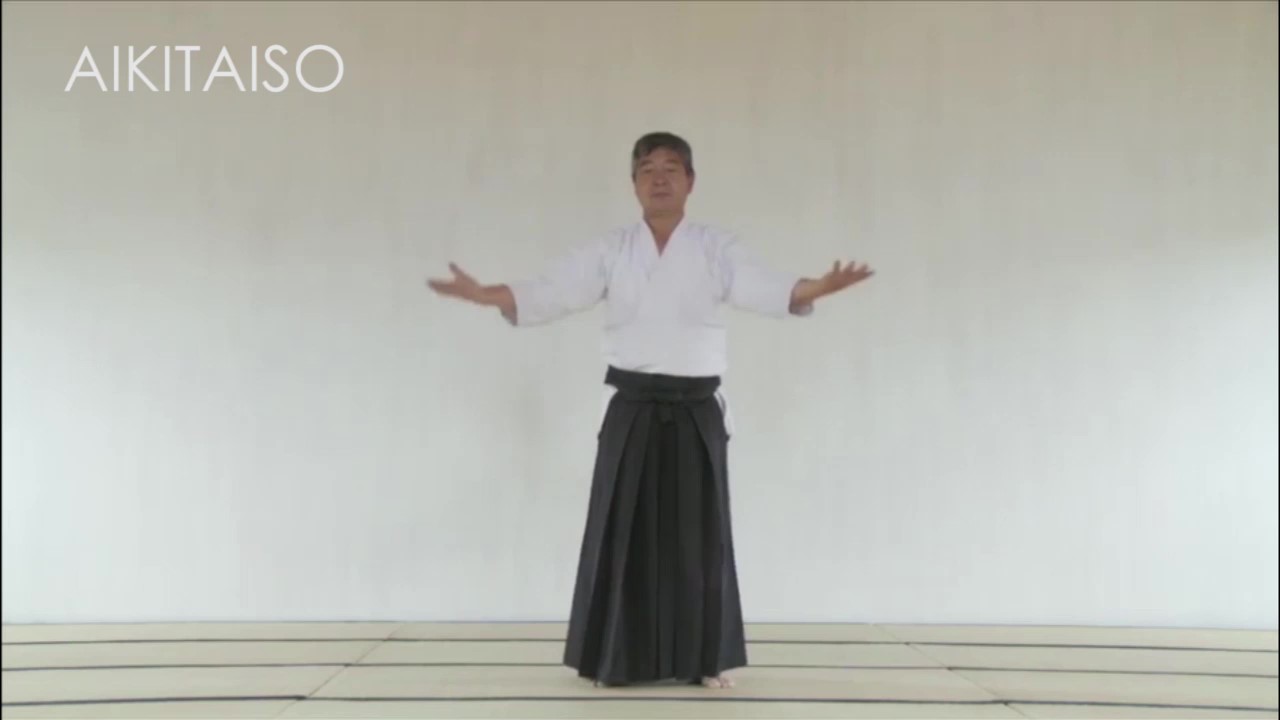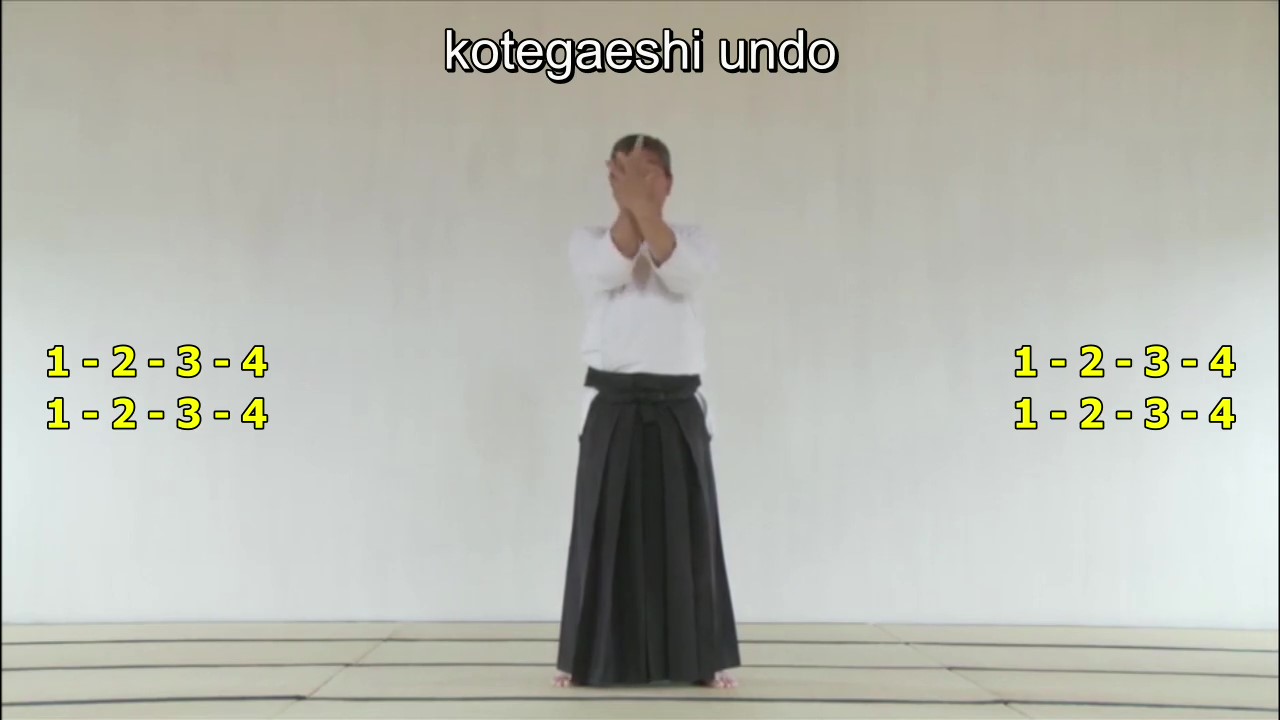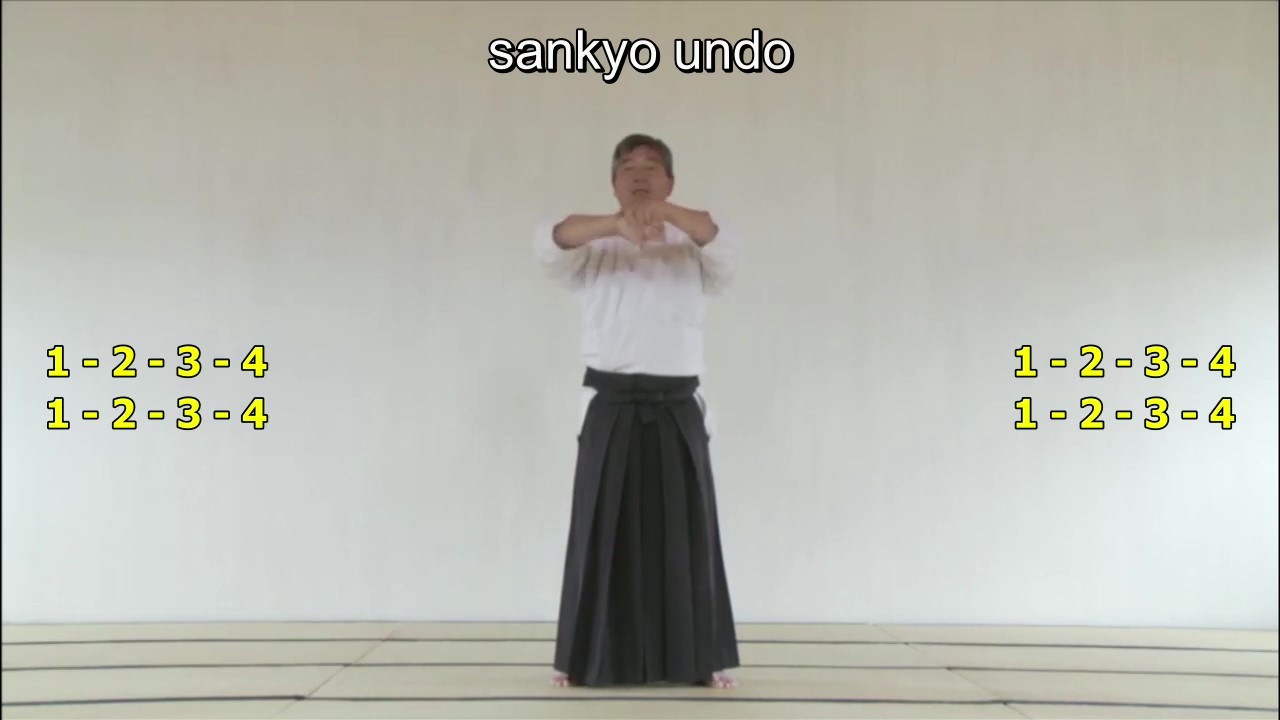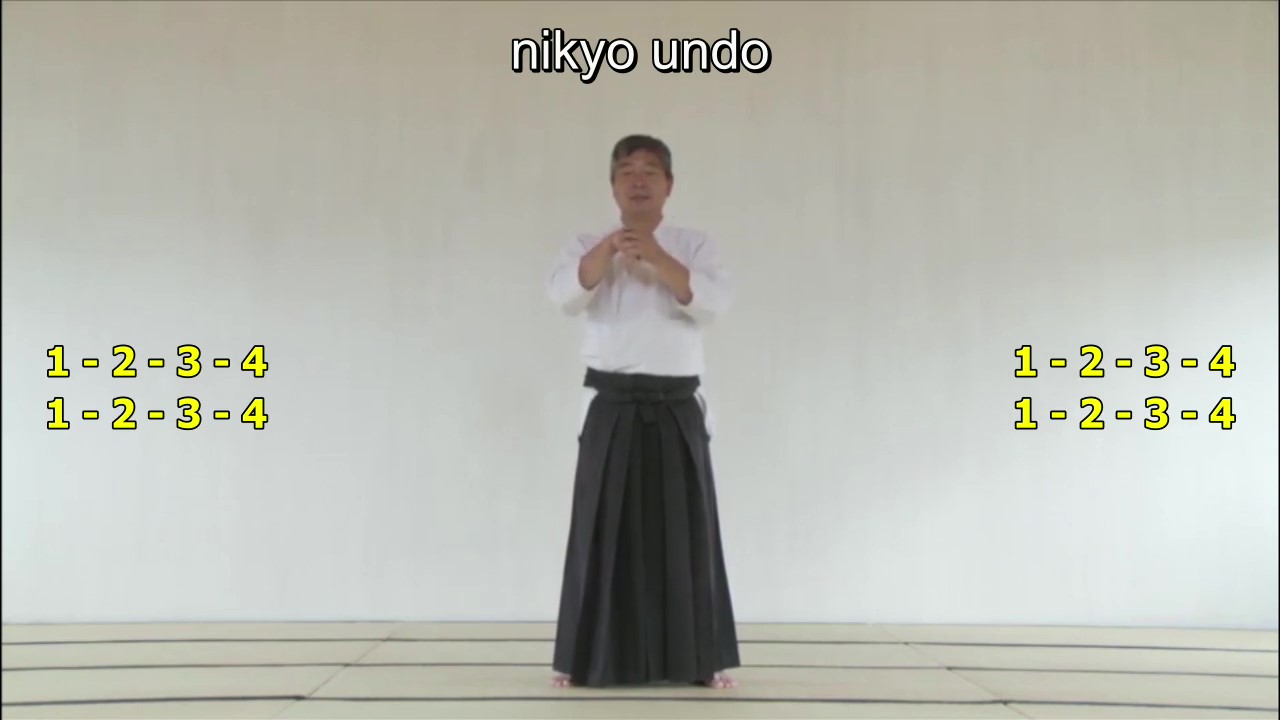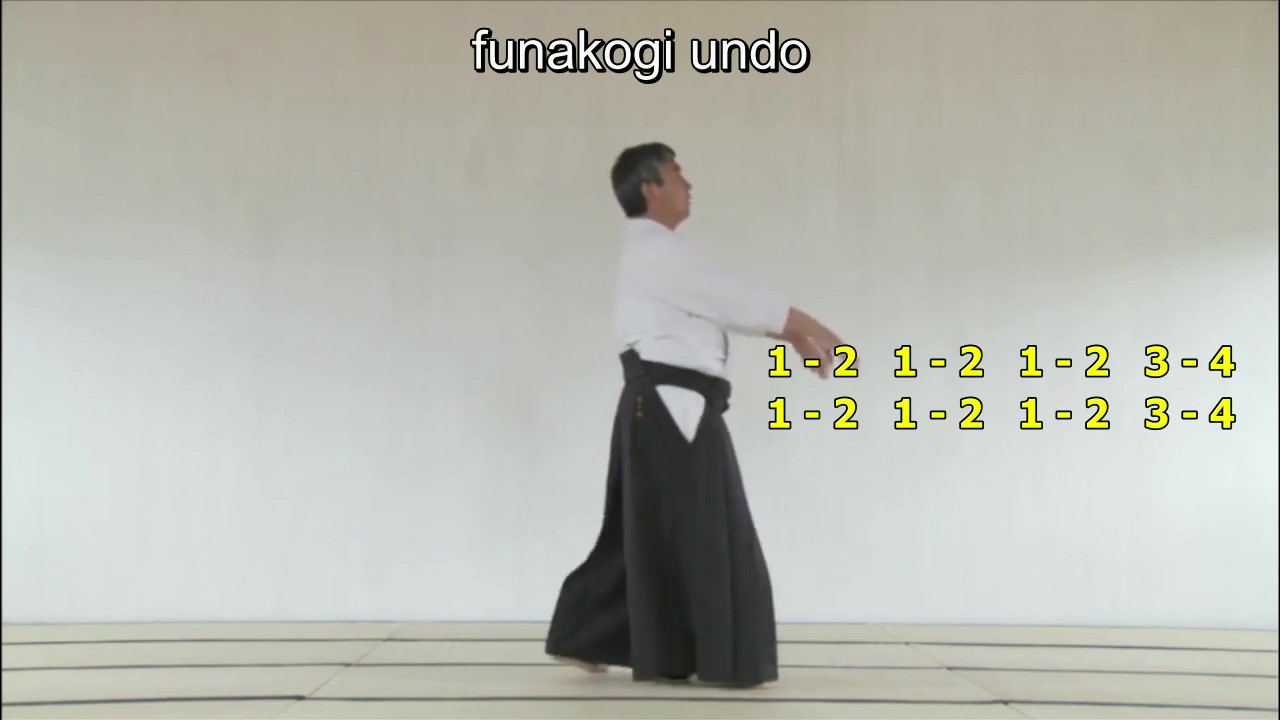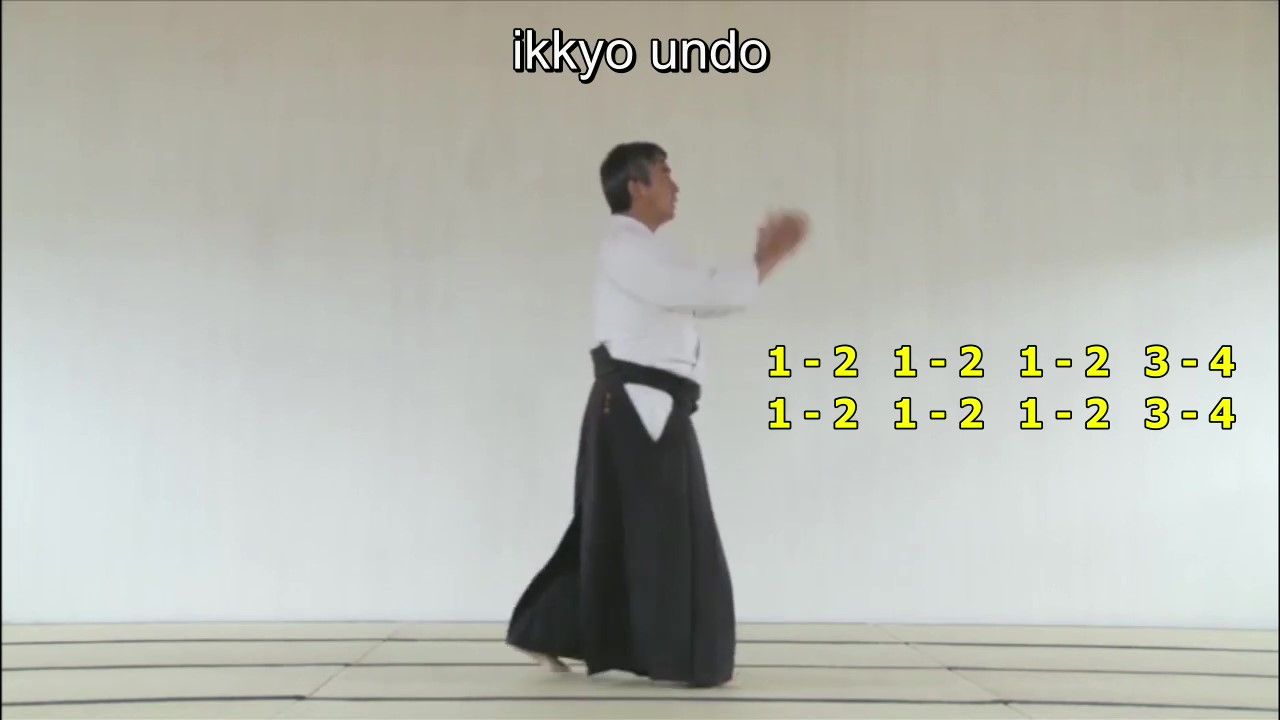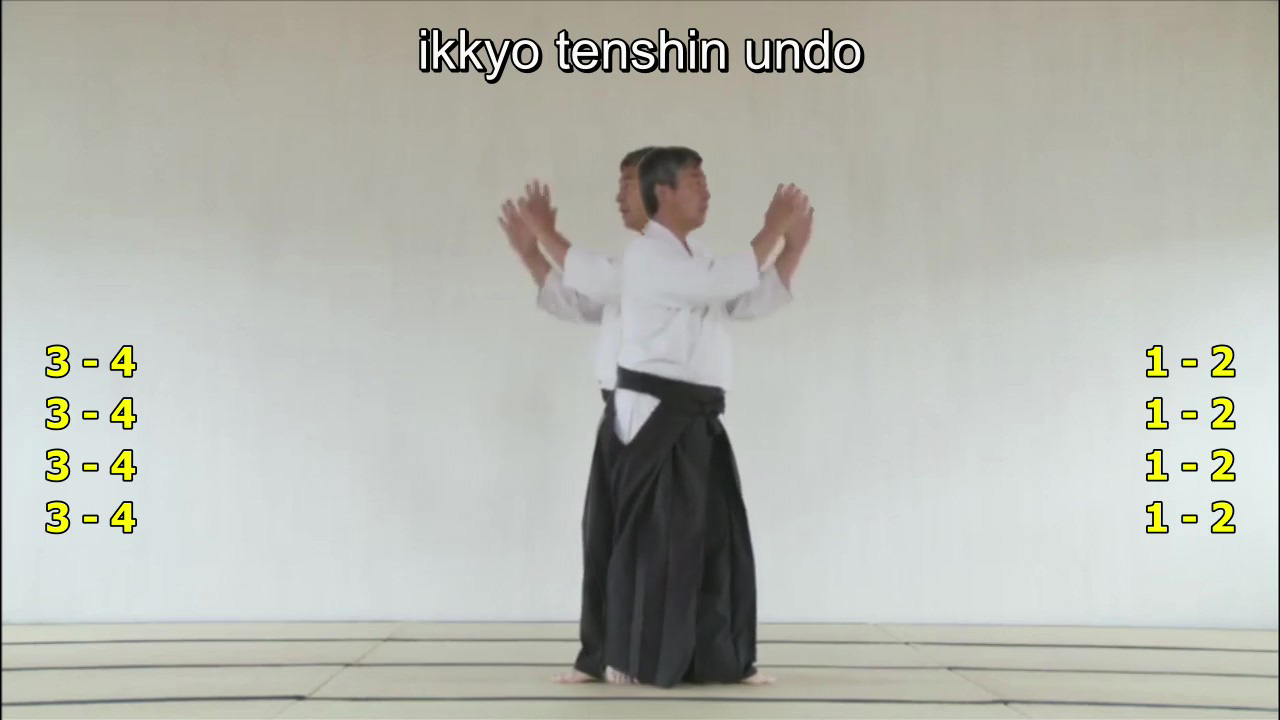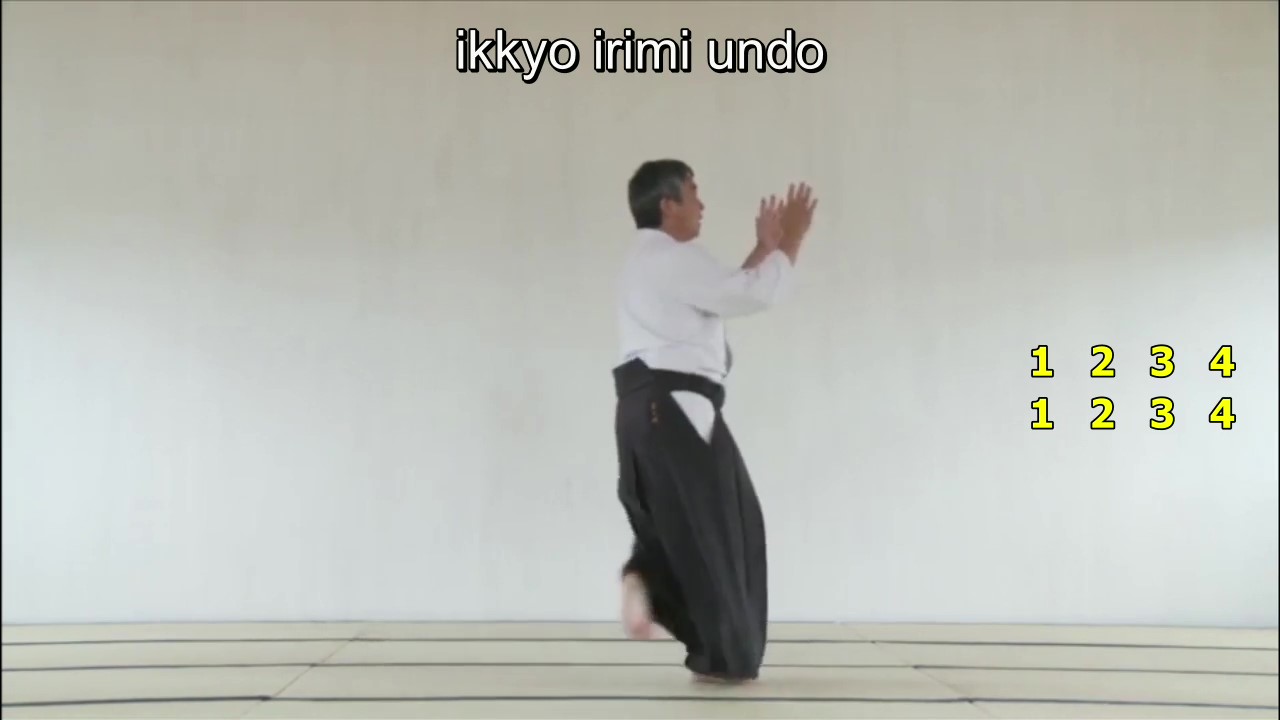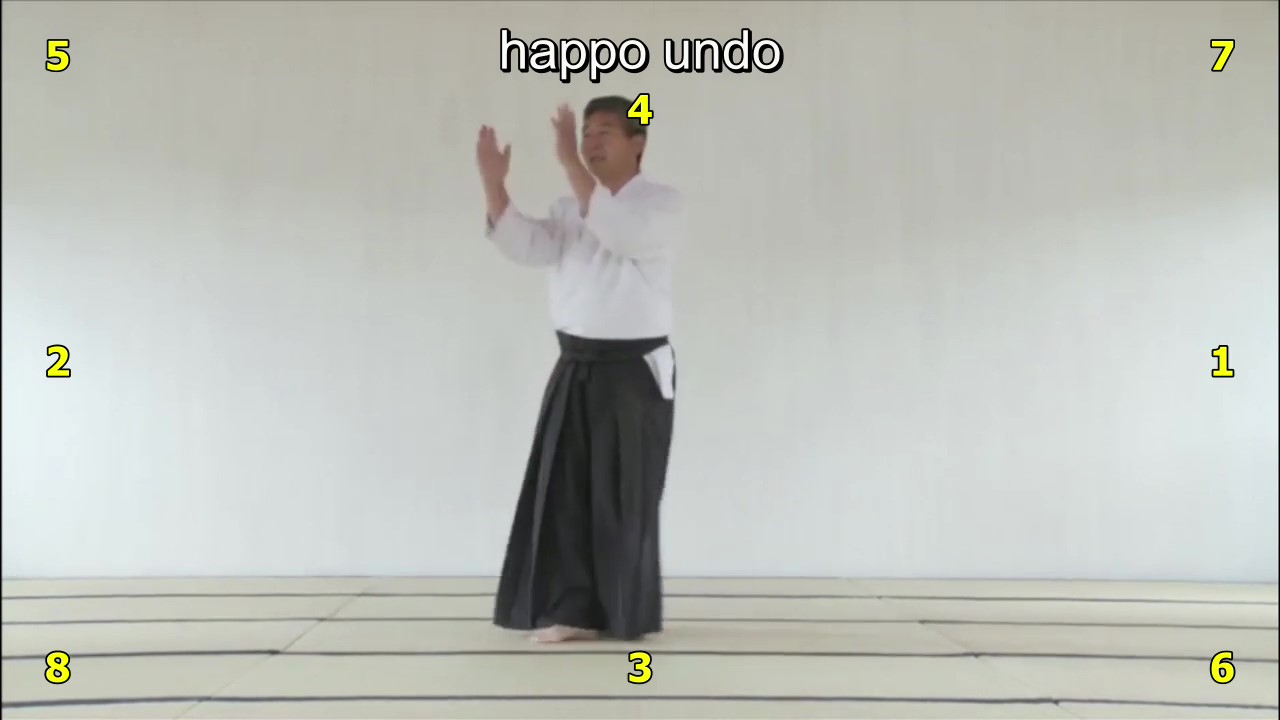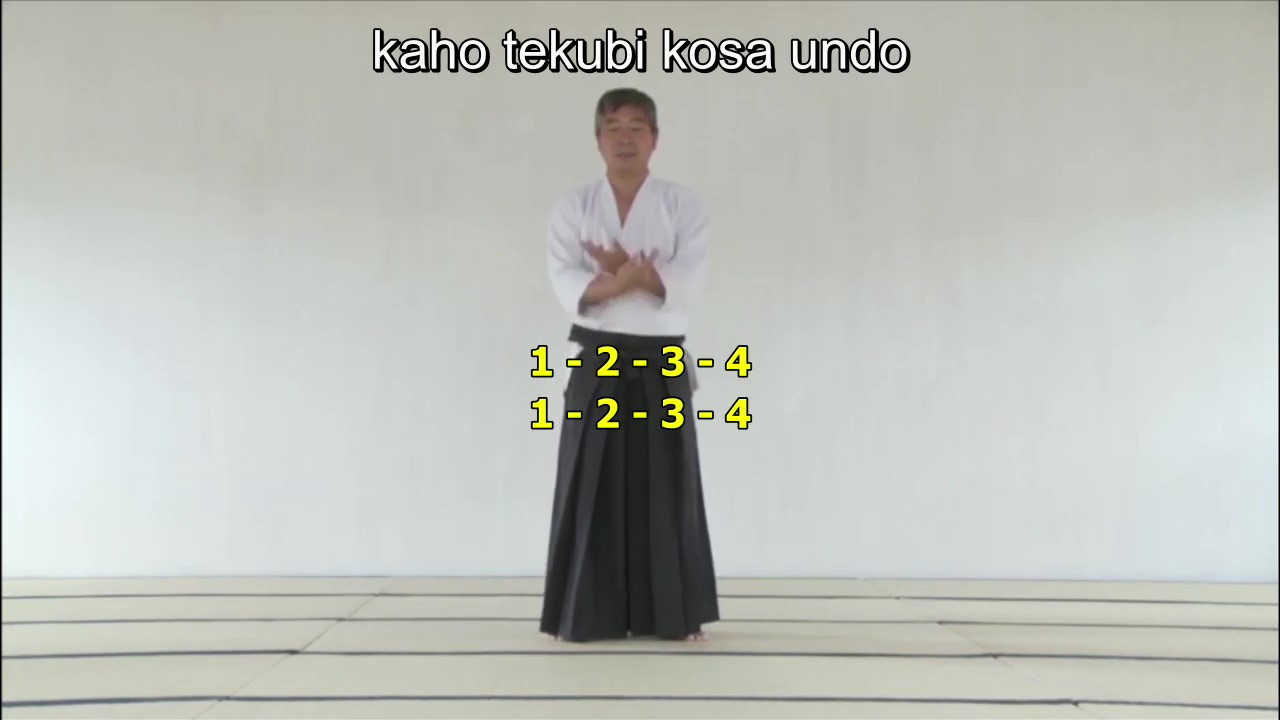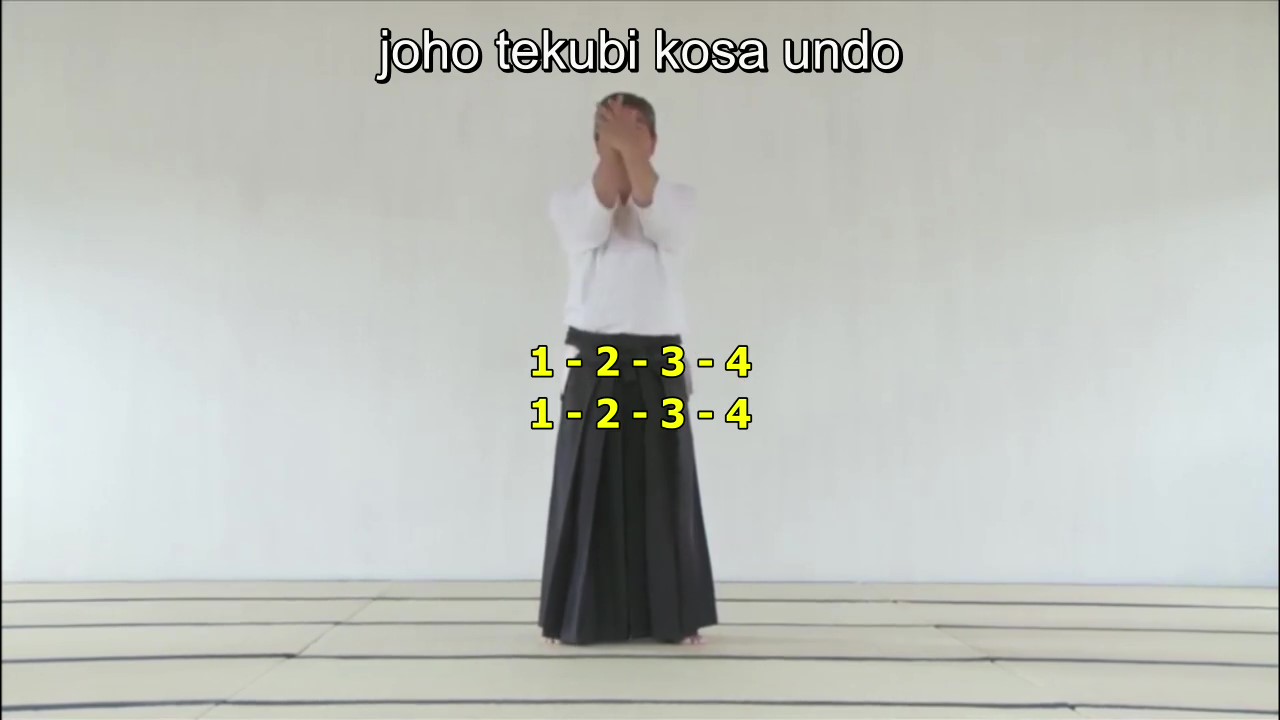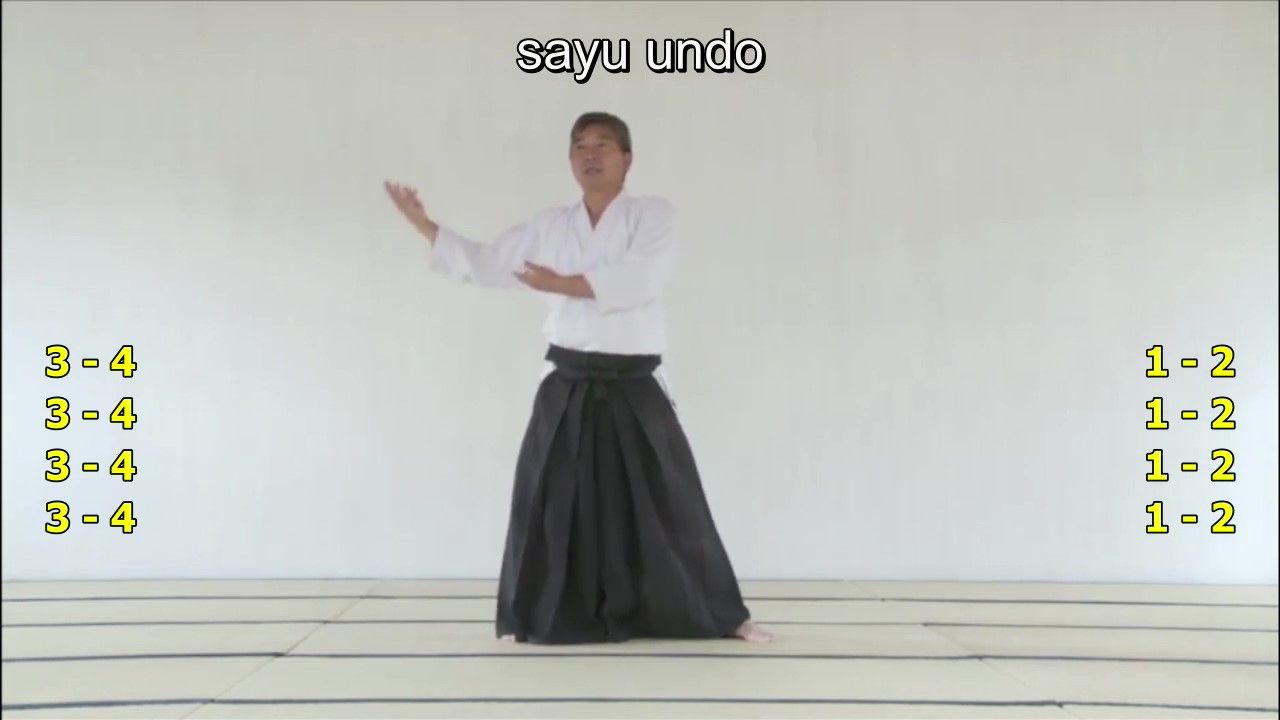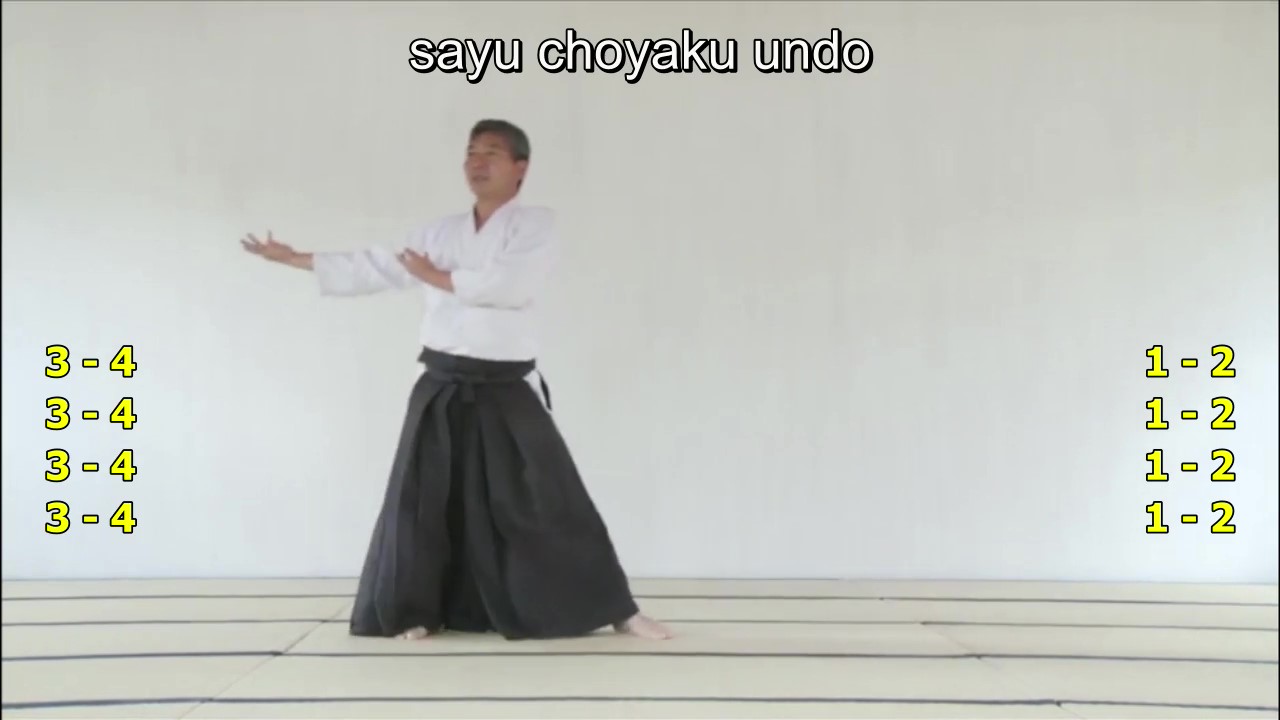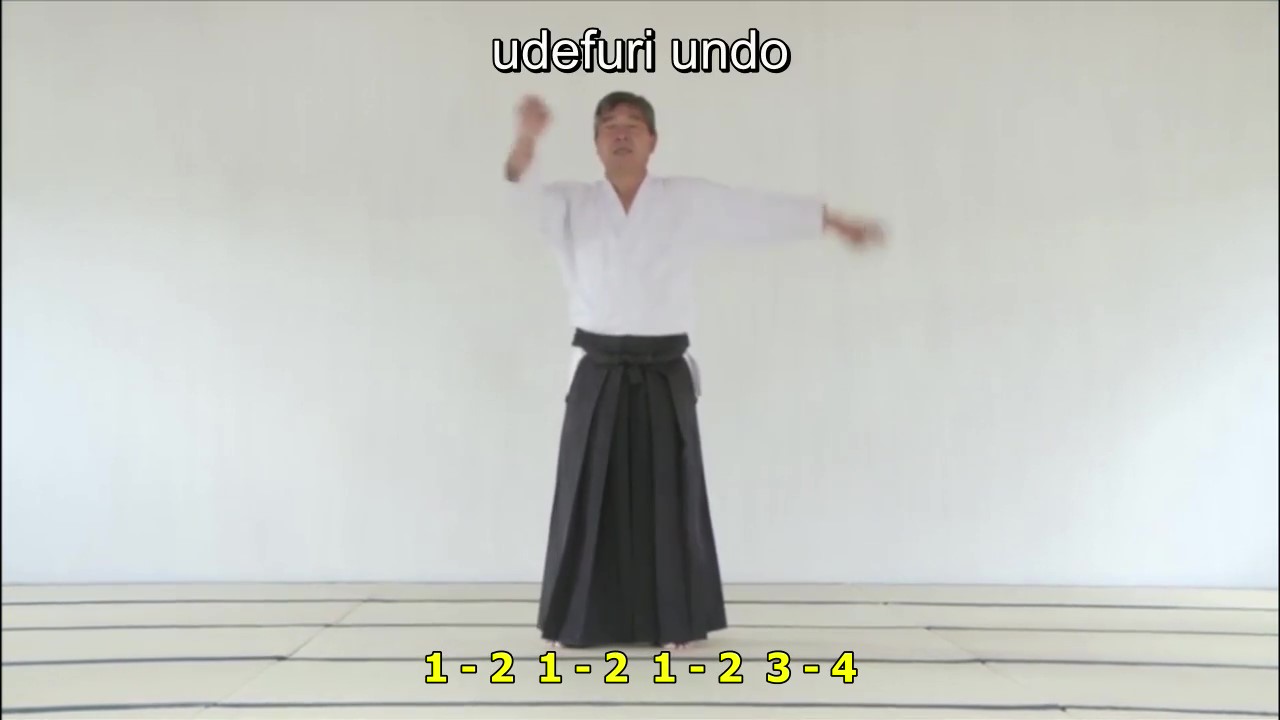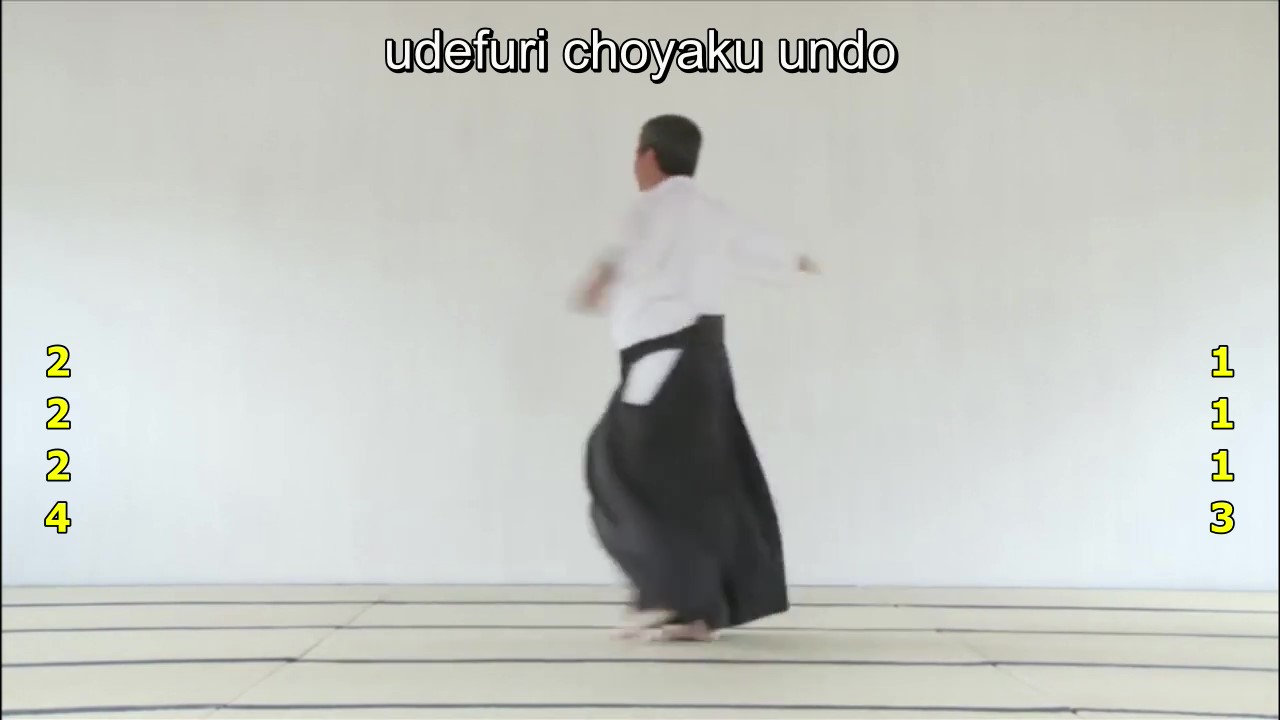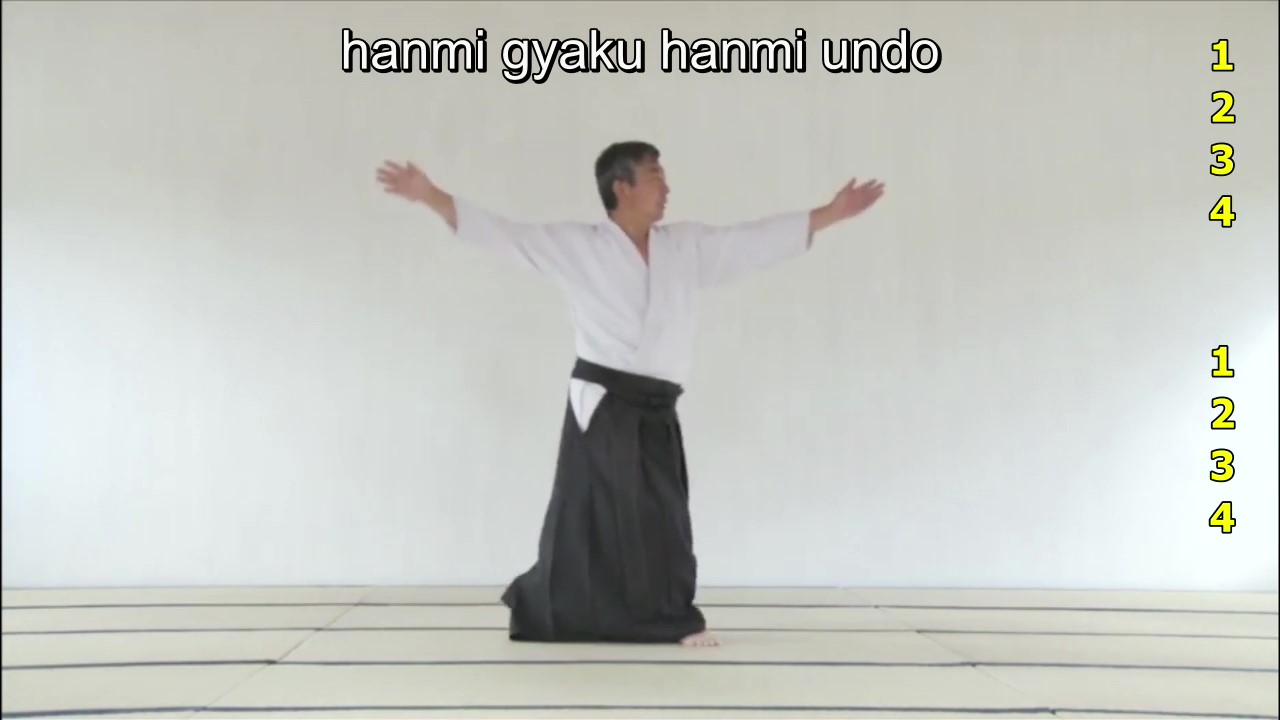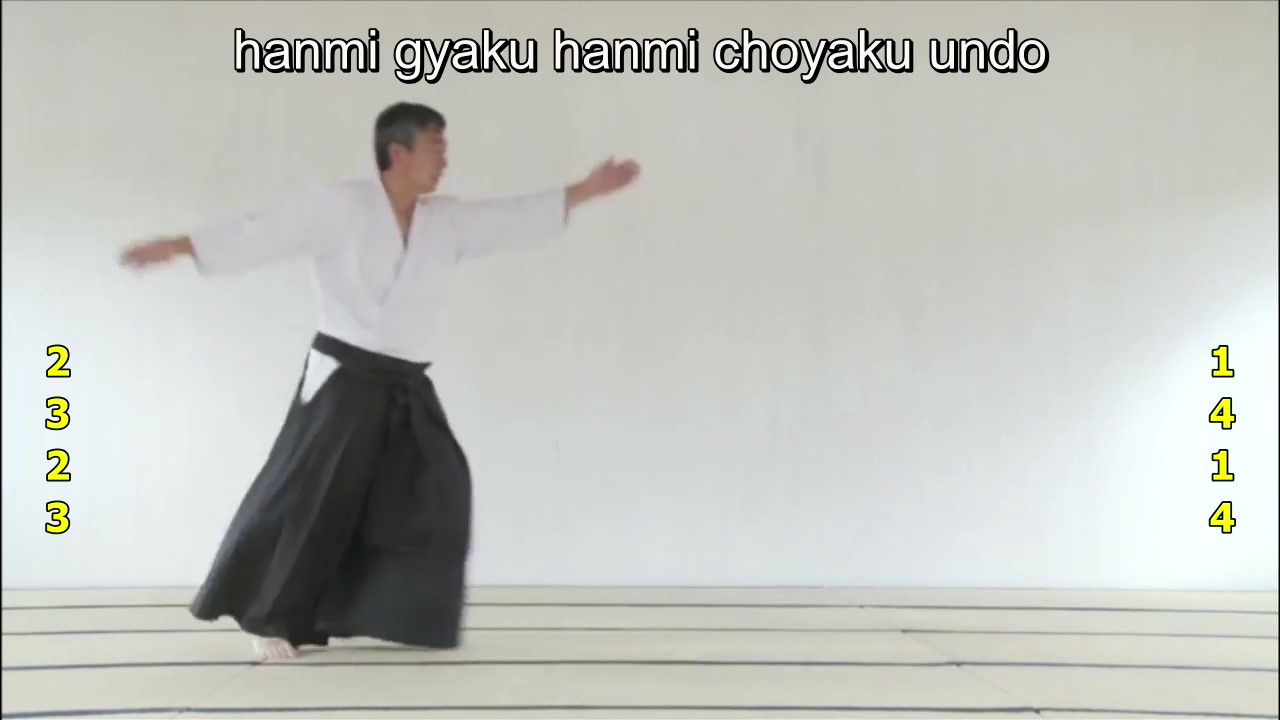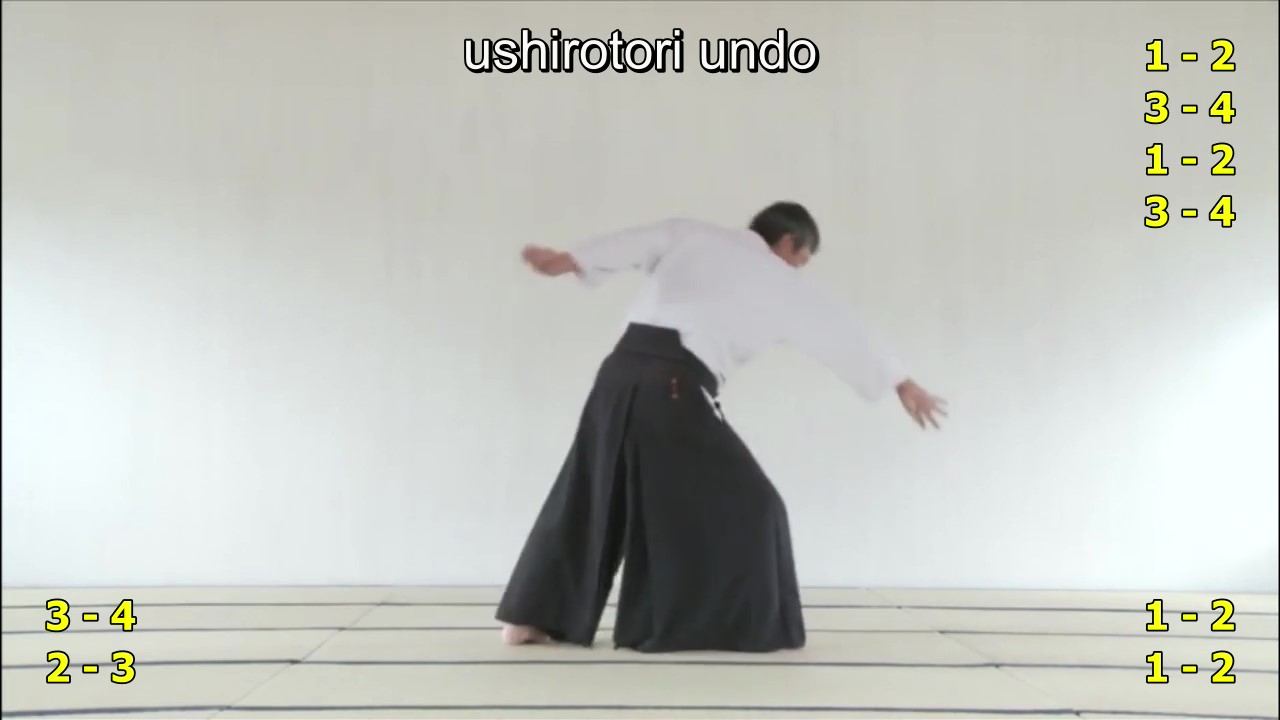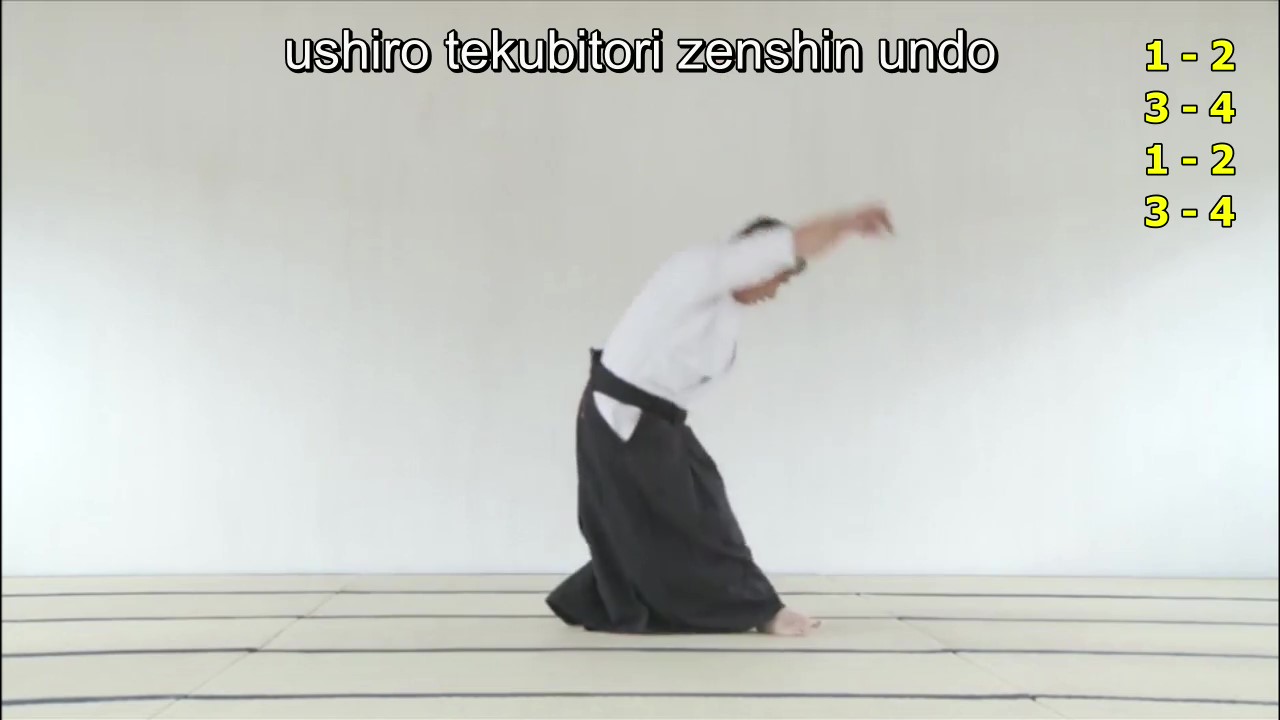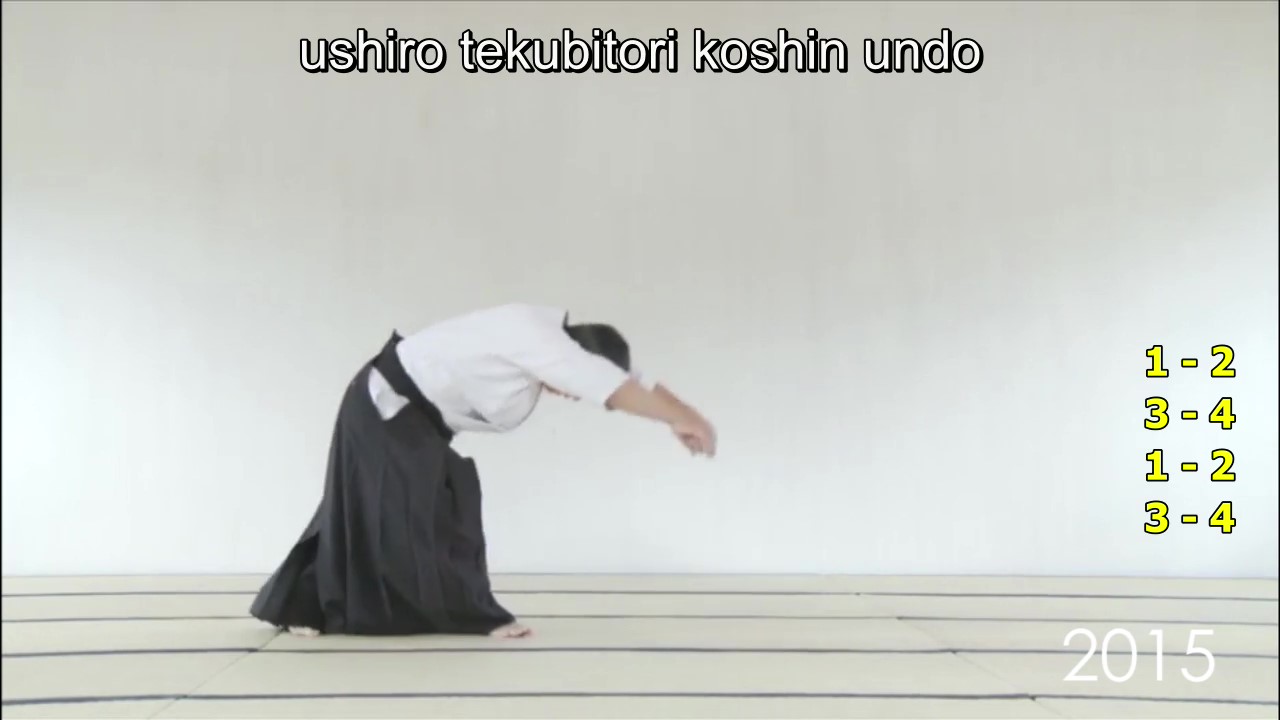Aikitaiso
01 kotegaeshi 1-2-3-4; 1-2-3-4; 1-2-3-4; 1-2-3-4
02 sankyo 1-2-3-4; 1-2-3-4; 1-2-3-4; 1-2-3-4
03 nikyo 1-2-3-4; 1-2-3-4; 1-2-3-4; 1-2-3-4
04 funakogi 1-2 1-2 1-2 3-4; 1-2 1-2 1-2 3-4
05 ikkyo 1-2 1-2 1-2 3-4; 1-2 1-2 1-2 3-4
06 ikkyo tenshin 1-2-3-4; 1-2-3-4; 1-2-3-4; 1-2-3-4
07 ikkyo irimi 1 2 3 4; 1 2 3 4
08 happo 1 2 3 4 5 6 7 8; 1 2 3 4 5 6 7 8
09 kaho tekubi kosa 1-2-3-4; 1-2-3-4
10 joho tekubi kosa 1-2-3-4; 1-2-3-4
11 sayu 1-2-3-4; 1-2-3-4; 1-2-3-4; 1-2-3-4
12 sayu choyaku 1-2-3-4; 1-2-3-4; 1-2-3-4; 1-2-3-4
13 udefuri 1-2 1-2 1-2 3-4
14 udefuri choyaku 1-2 1-2 1-2 3-4; 1-2 1-2 1-2 3-4
15 hanmi gyaku hanmi 1 2 3 4; 1 2 3 4
16 hanmi gyaku hanmi choyaku 1 2 3 4 1 2 3 4; 1 2 3 4 1 2 3 4
17 ushirotori 1-2 3-4; 1-2 3-4; 1-2 3-4; 1-2 3-4
18 ushirotekubitori zenshin 1-2 3-4; 1-2 3-4
19 ushirotekubitori koshin 1-2 3-4; 1-2 3-4

